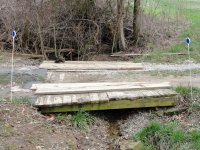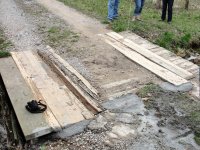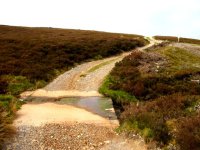JeremyL
Silver Member
This old bridge needs replacing after a hard winter outside of Bowling Green, Kentucky. It usually has only this amount of water trickling under, but in a big, hard rain there is enough water to wash over the surface.
I want to building it so that a gravel truck can cross it with much needed loads for my driveway. I am thinking about treated 8" X8"s. How many would I need and at what spacing? Then treated 2X boards across the 8X8s. I will have no idea what the footing is like until I do the demolition. It is 8' long and 10' wide.
Suggestions? Links to plans or articles?
Thanks, JeremyL.
I want to building it so that a gravel truck can cross it with much needed loads for my driveway. I am thinking about treated 8" X8"s. How many would I need and at what spacing? Then treated 2X boards across the 8X8s. I will have no idea what the footing is like until I do the demolition. It is 8' long and 10' wide.
Suggestions? Links to plans or articles?
Thanks, JeremyL.




